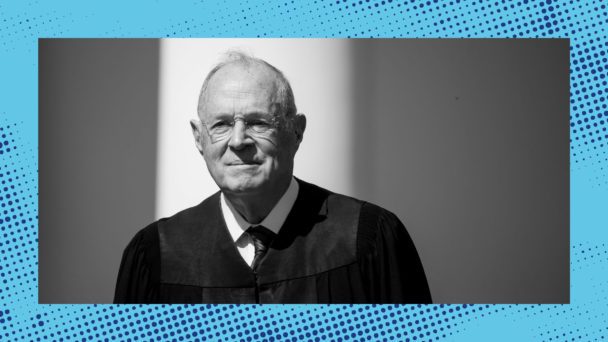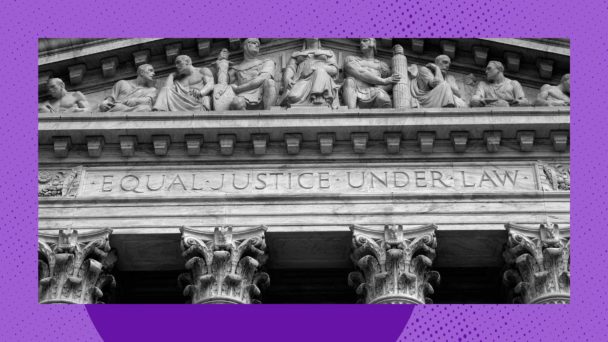Every season seems to bring us another unnecessary book from a Supreme Court justice, and this fall’s entrant is Amy Coney Barrett’s Listening to the Law. Given that the book reportedly garnered her a $2 million advance, I am begging Congress to increase the justices’ pay so they might be less likely to waste our time.
In Listening to the Law, Barrett ostensibly intends to “weave together three themes: the work of the Court and its justices, the Constitution and its impact, and my own approach to judging.” The final product: a superfluous amalgam of middle school-level history and selective judicial philosophy that reads like a tuneless, 250-page version of “Schoolhouse Rock.” Barrett and her conservative supermajority comrades have spent five years joyfully restructuring American society to their own ends. With this book, she’s on a side quest to pacify readers into thinking that the Supreme Court merely “interprets the law”—nothing to see here.
One of Barrett’s goals seems to center on the public’s purported lack of understanding of what the Supreme Court, and judges more generally, do. Her answer to that question retells the hoary story of “interpreting the law,” exercising judicial review, and carefully evaluating arguments without regard to politics. Barrett’s version of the Court’s operations bears no relation to the reality we all suffer through, in which the Court manipulates its docket and twists its doctrines to decide the cases it wants, when it wants, with the arguments it wants.
Consider Barrett’s description of the “emergency” docket—her euphemism for the shadow docket, in which the Court makes decisions without briefing, oral argument, or meaningful justifications, and then berates lower court judges for not following its non-precedents. Yet this is fine, in her view, because “committing the Court’s reasoning to print risks hardening what should be tentative into something more definite.” Too true—which is why the explosion of “decisions” made on the shadow docket has caused so many problems, including allowing ICE to racially profile in Los Angeles and permitting Trump to fire leaders of independent agencies without cause.
But in Listening to the Law, you’ll get no acknowledgement that the justices have played games with their own standards and selectively interpreted whether not expediting rulings causes irreparable harm. These abstruse legal doctrines anesthetize all but the nerdiest proceduralists, but as Barrett well knows, procedure is where the action really happens.

Photo by Mario Tama/Getty Images)
Barrett’s treatment of stare decisis reflects similar bloodlessness, obscuring how intentionally and politically the Court acts to get rid of decisions it doesn’t like. In her telling, the Roberts Court has only overturned precedent “roughly once per term.” That’s a weird statistic to employ, because we don’t usually think of stare decisis in quantitative terms. And for good reason: Consider that Dobbs v. Jackson Women’s Health Organization, in which the justices overturned Roe v. Wade, eliminated or severely limited abortion access in nearly half the nation. That’s far more consequential than, say, South Dakota v. Wayfair, a 2018 tax case that overturned a 1992 precedent—yet in Barrett’s arithmetic, the two cases count equally.
I wonder if Barrett’s math even checks out. It’s not clear that she counts Kennedy v. Bremerton School District, for erxample, which merely “abandoned” the Establishment Clause framework set forth in Lemon v. Kurtzman, or Students For Fair Admissions v. Harvard, which didn’t explicitly overrule the earlier affirmative action cases, but merely invalidated race-conscious admissions systems at Harvard and the University of North Carolina. But once you start arguing over tallying, you’ve already lost by agreeing to play a silly game.
The book mixes these anodyne characterizations of Barrett’s job with stultifying descriptions of the ratification of the U.S. Constitution two and a half centuries ago, and the day-to-day work of Supreme Court clerks today. (I never want to hear the phrase “cert pool” again). Her overview of statutory interpretation canons led even me, a law professor, to sigh out loud. I closed this book still puzzled as to why Barrett chose to write it. Perhaps the simplest answer applies: She was supposedly offered $2 million to do it.
Beyond its lucrative payout, Listening to the Law furthers the Court’s larger project of draining the drama out of the job to allow the justices to exercise raw political power without public scrutiny. By constantly casting the Court’s work as the work of umpires and burying her selective descriptions of the Court’s power amid remedial civics education, Barrett shifts the discussion of the Court from politics into something far less threatening. In her telling, nothing the Court does should seem controversial: It’s all part of the beautiful edifice of the Constitution and the American system of government, which may have some minor flaws, but mostly works.
At least, it works for her. It does not work for, to take some recent examples, anyone in danger of deportation by ICE; anyone who might need reproductive care in a state that has severely restricted access; or any trans child in a state hostile to their very existence. None of these people feature in the book, other than in brief descriptions of the underlying facts. They have been bleached out of the text altogether.
Listening to the Law can best be understood as an attempt to rally the public to buy the message that the Supreme Court acts apolitically, with reasoned and objective analysis. That’s a sign of desperation as much as anything else. Right now, the Court’s approval ratings are as low as they’ve been in decades, thanks in large part to the conservative justices’ campaign of ratifying Donald Trump’s autocratic agenda. A single book can’t do much to change public opinion—particularly when the book is as pointless as this one.




